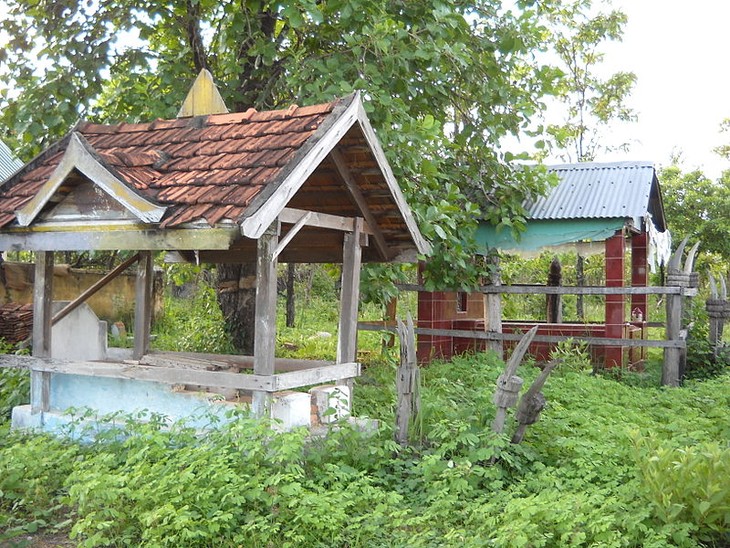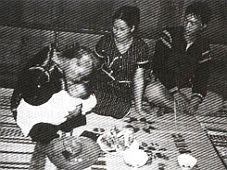(VOVworld) – The Ede have their own perceptions of the life cycle. An Ede person has to experience various rites during his or her lifetime to report on their development to the gods.
 |
| An Ede tomb (Photo: Wikipedia.org) |
The Ede do not observe the custom of worshipping ancestors. If a person dies, his/her relatives will hold a funeral ritual from one to three years later to say farewell to the dead. Professor Ngo Duc Thinh, a member of the National Heritage Council, told VOV:“Ede people believe that if a funeral ceremony has not yet been held, the soul of the dead hovers around the village and the family. So they bring rice to the tomb to feed the dead through a bamboo pipe connected with the coffin. After the ritual is held, the relationship between the living and the dead is terminated forever, so that the soul of the dead can join the other ancestors”.
To hold a funeral rite, relatives of the dead must prepare rice, meat, wine, and other offerings and then invite villagers to the event. Even a month before, family members carve statues and built a tomb, which will have a roof and be surrounded by statues made from wood or buffaloes’ horns. During the funeral rite, the livings offer animals and worship the gods, and send off offerings to the dead. There are music, singing, and dancing performances. Professor Thinh again: “The living gives offerings to the dead by perforating them. For example, a perforated small jar or papoose is thought to be used by the dead in another world because the Ede believe that the world of the living and the world of the dead are opposed”.
After holding the funeral rites, the living feel they have fulfilled their obligations to the dead, who is believed to be reincarnated into a new life. That’s why the funeral is treated like a festival. According to Ede belief, the sooner the funeral rites are held, the earlier the soul of the dead will be reincarnated into a new-born baby and return to our life.
The Ede consider a ritual to name a new-born child very important. 3 days after the child is born, family members hold the ritual, reporting to the ancestors the presence of a new member, according to Professor Thinh: “The Ede believe that a dead person will be reborn in the form of dew. Walking to the farm, the Ede avoid trampling on leaves with dew on them. During the naming ritual, a leaf covered with dew is plucked and placed in front of the child. People think that the ancestors are reborn in their offspring. A sorcerer will choose a name for the child”.
 |
| A naming rite (Photo: www.vista.net.vn) |
The naming ceremony is held within the family without singing, dancing or gong playing. Offerings include a cup of wine, a chicken, an eggplant, a guava leaf, a bronze cup and an awl for a baby boy or a dagger for a baby girl. After naming the child, the sorcerer feeds him/her some chicken liver and applies a guava leaf soaked with dew to the child’s lips, wishing him/her bravery and strength. When the child grows up, an adulthood ceremony will be held for him. Professor Luu Hung, Deputy Director of the Museum of Ethnology, told VOV: “An Ede person attends various rites in his/her lifetime and their social prestige is promoted by each rite. The adulthood ritual involves a number of steps with an increasing number of offerings: first one pig, then 3 pigs and then one buffalo. The number of wine jars also increases. These offerings are then distributed as treats to the community, who acknowledge the ritual holder’s rising social status”.
The funeral and naming rites are important events in the life of an Ede person. People are now reviving the brotherhood ritual, which is also considered very meaningful for the Ede in Vietnam’s central highland region.